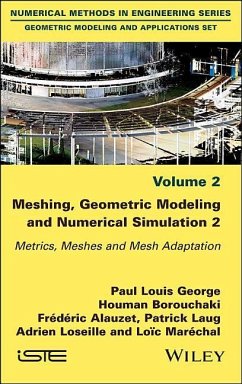
Numerical Simulation, an Art of Prediction 1
Theory
Versandkostenfrei!
Versandfertig in über 4 Wochen
158,99 €
inkl. MwSt.
Weitere Ausgaben:

PAYBACK Punkte
79 °P sammeln!
Numerical simulation is a technique of major importance in various technical and scientific fields. Used to understand diverse physical phenomena or to design everyday objects, it plays a major role in innovation in the industrial sector. Whilst engineering curricula now include training courses dedicated to it, numerical simulation is still not well-known in some economic sectors, and even less so among the general public. Simulation involves the mathematical modeling of the real world, coupled with the computing power offered by modern technology. Designed to perform virtual experiments, dig...
Numerical simulation is a technique of major importance in various technical and scientific fields. Used to understand diverse physical phenomena or to design everyday objects, it plays a major role in innovation in the industrial sector. Whilst engineering curricula now include training courses dedicated to it, numerical simulation is still not well-known in some economic sectors, and even less so among the general public. Simulation involves the mathematical modeling of the real world, coupled with the computing power offered by modern technology. Designed to perform virtual experiments, digital simulation can be considered as an "art of prediction". Embellished with a rich iconography and based on the testimony of researchers and engineers, this book shines a light on this little-known art. It is the first of two volumes and focuses on the principles, methods and industrial practice of numerical modeling.













